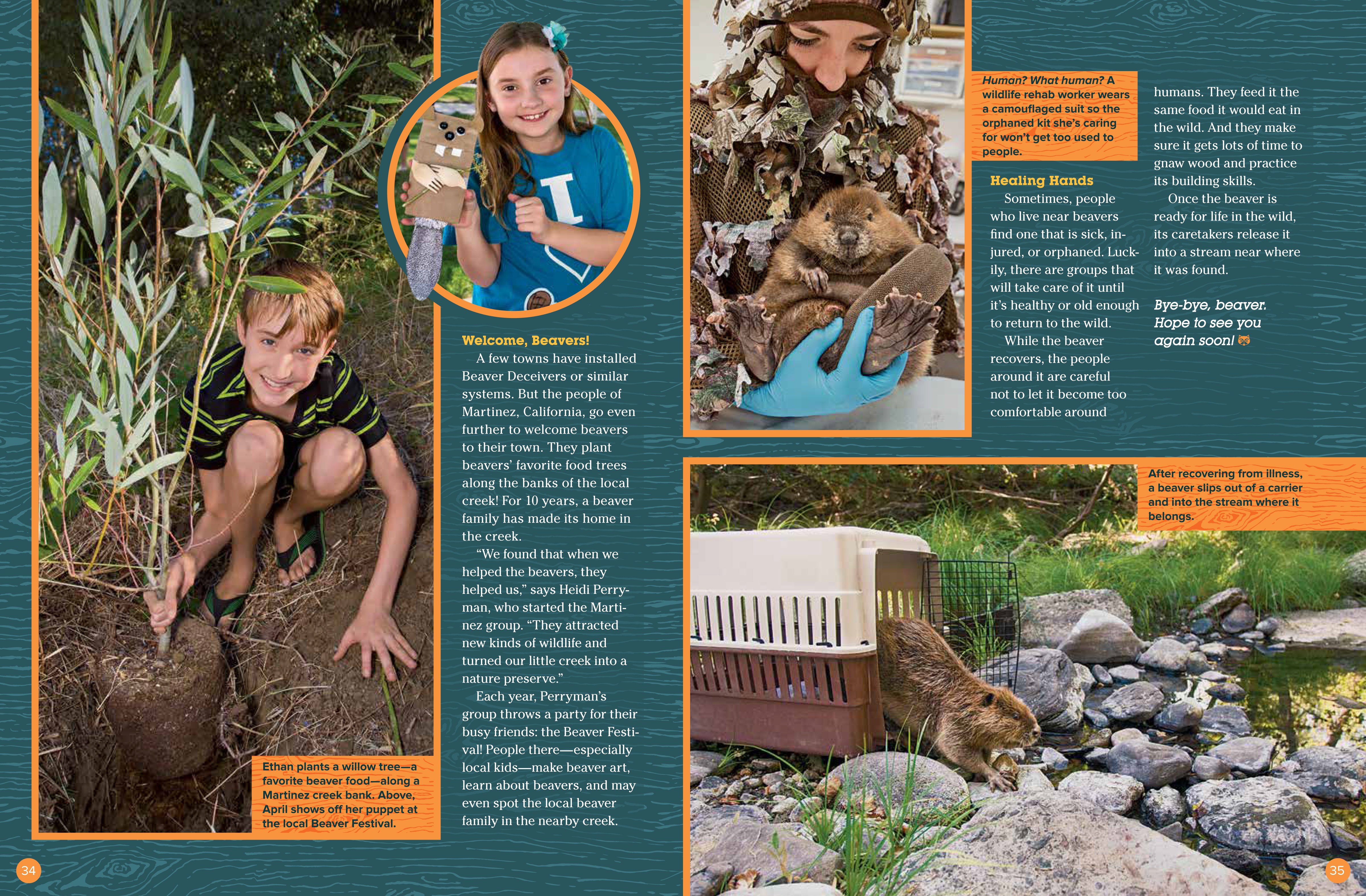How wonderful to wake up and see author Ben Goldfarb writing about coastal beavers. Beavers in salty tidal marshes happens to be more than a little relevant to our story, and even though we think of them more as ‘urban beavers’ our beavers had to contend with tides and saltwater and it’s nice to see them written about.
Better yet, the article for the VERY FIRST TIME uses Suzi Eszterhas wonderful photos of OUR VERY BEAVERS.
It’s interesting to hear how much isn’t know about beavers in this ecosystem. And I found it fascinating to hear the vet mention maybe some beavers can just tolerate salt water more than others. Certainly it felt, when our kits died in 2015 that the very high tides that summer just carried a secret weapon that ended them.
But i am relieved to learn that no one really knows.
![]()
The Gnawing Question of Saltwater Beavers
Scientists have long overlooked beavers in the intertidal zone. Now they’re counting on the freshwater rodents to restore Washington’s coastal ecosystems.
Authored by by Ben Goldfarb
Yet beavers aren’t just coastal wanderers, they’re also residents—potential health consequences be damned. Greg Hood, senior research scientist at the Skagit River System Cooperative in Washington, says biologists have overlooked beavers in the state’s tidal shrublands, a liminal zone washed twice daily by the ocean. Until recently, Hood adds, estuarine beavers were considered bizarre anomalies, when they were considered at all. “You don’t find what you don’t look for,” he says.
In freshwater environs, the dam builders are the ultimate keystone species, their ponds and wetlands furnishing habitat for creatures from mink frogs to wood ducks to moose. Hood’s research suggests beavers are equally indispensable along the coast, engineering deep pools for fish, including juvenile salmon, in estuaries plagued by habitat loss. Acknowledging the importance—indeed the existence—of coastal beavers might just be vital to re-creating a lost intertidal world: an ecosystem sculpted by rodent teeth, undone by human hands.
True, our beavers never made it as far as the ocean but they had to contend with plenty of salt water and plenty of tides. Find 15 minutes and listen to this whole important story, intricately written by Ben and eloquently read by Heather Walter.
What this dam lacks in aesthetics, however, it makes up for in hydraulic brilliance. With the tide out, Bailey explains, this dam holds back water that would otherwise run to the sea, forming a deep bathtub in which beavers shelter from black bears and coyotes. Come back six hours later, and the returning tide will have filled this channel, completely submerging the dam. “You could kayak right over the top of it and not even know it was there,” Bailey says.
In other words, the estuary’s beavers seem to anticipate tidal fluctuations, erecting their dams in places that ensure water remains even when the tide reaches its ebb. The US Army Corps of Engineers could hardly have done it better.
Tadaa! Recognize that handsome face? That’s our second mother carrying willow (notice the reddish tinge and visible teats?) branches lovingly chopped by the always helpful treasurer of Worth A Dam in our humble Alhambra Creek. Notice that this is a rare photo that shows upper teeth. And isn’t it fitting that this loving article about beavers doing the impossible should feature a photo of our beavers doing the impossible?
In a sense, then, our coastal beaver blind spot is an artifact of history—a form of “ecological amnesia,” as Frances Backhouse put it in her book Once They Were Hats. Just as sun-blotting flocks of passenger pigeons and earth-shaking herds of bison vanished from our skies and prairies, the combination of marsh drainage and trapping wiped beavers from our coastlines and, eventually, our memories.
We will remember. Don’t worry. Go listen to the whole thing. It’s really worth it.



























































